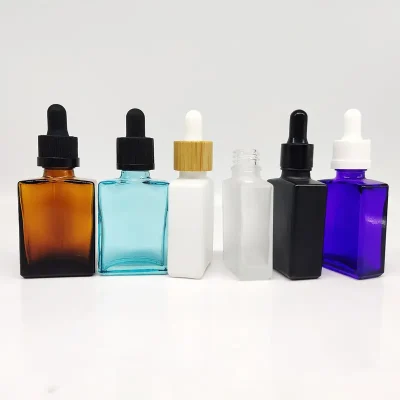“Plastic Dropper Bottles: Balancing Durability with Environmental Concerns”
Plastic dropper bottles present a unique challenge in balancing durability and functionality with environmental sustainability. While plastic offers numerous benefits, including durability and cost-effectiveness, concerns about its environmental impact have led to a reevaluation of its use in packaging. Let’s explore how the industry is addressing these concerns:
Durability and Functionality
- Shatterproof Design: Plastic dropper bottles are shatterproof, making them safer and more practical for everyday use, especially in environments where glass may pose a risk of breakage.
- Precision Dispensing: Plastic dropper bottles are equipped with precise dropper mechanisms that allow for accurate dispensing of liquid formulations, ensuring consistent dosage control and user convenience.
- Chemical Resistance: Plastic dropper bottles exhibit excellent chemical resistance, making them suitable for storing a wide range of liquid formulations, including pharmaceuticals, skincare products, and essential oils.
Environmental Concerns
- Recyclability: Many plastic dropper bottles are recyclable, allowing them to be repurposed into new products after use. However, challenges remain in the recycling infrastructure, such as sorting and processing capabilities, which can impact the recyclability of plastic materials.
- Single-Use Plastics: Plastic dropper bottles are often considered single-use plastics, contributing to plastic pollution and environmental degradation. Efforts to reduce single-use plastics include promoting reusable alternatives, encouraging recycling, and implementing legislation to restrict the use of certain plastic products.
- Environmental Impact: The production, use, and disposal of plastic dropper bottles can have environmental consequences, including carbon emissions, resource depletion, and habitat destruction. Lifecycle assessments and eco-design strategies are being employed to minimize the environmental footprint of plastic packaging.
Sustainable Solutions
- Recycled Materials: Utilizing recycled plastics in dropper bottle production reduces reliance on virgin materials and diverts plastic waste from landfills. Manufacturers are increasingly incorporating recycled content into their plastic dropper bottles to promote circularity and resource efficiency.
- Biodegradable and Compostable Plastics: Biodegradable and compostable plastics offer alternative solutions to traditional plastics, as they break down into natural components under certain conditions. However, challenges exist in terms of performance, scalability, and end-of-life management.
- Extended Producer Responsibility (EPR): Implementing EPR schemes shifts responsibility for managing plastic waste from consumers to producers, incentivizing manufacturers to design more sustainable packaging and invest in recycling infrastructure.
Consumer Awareness and Education
- Informing Consumers: Educating consumers about the environmental impact of plastic packaging encourages sustainable consumption habits, such as choosing products with minimal packaging or opting for reusable alternatives.
- Product Stewardship: Brands and manufacturers play a vital role in promoting environmental stewardship by transparently communicating their sustainability efforts and offering eco-friendly packaging options to consumers.
In summary, plastic dropper bottles offer durability and functionality but raise concerns about their environmental impact. By adopting sustainable solutions, such as using recycled materials, exploring biodegradable alternatives, and promoting consumer awareness, the industry can balance the benefits of plastic packaging with environmental considerations, ensuring a more sustainable future for plastic dropper bottles.







